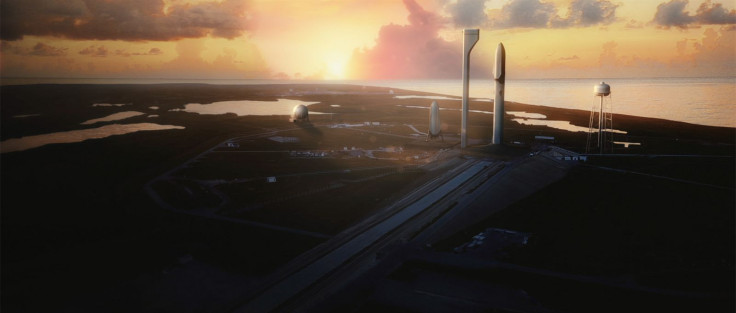SpaceX Mars Colonization Plan: BFR Spaceships To House First Martian Settlers

We all are aware of SpaceX’s ambitious plan to put humans on Mars and colonize the red planet. The project, first announced in 2016, revolves around the Big Falcon Rocket (BFR) that the company is building for transporting humans and cargo between Earth and Mars.
Last year at the International Astronautical Congress (IAC), SpaceX boss Elon Musk detailed how the BFRs would be fueled and used to establish the human presence on Mars, and now, the company’s Principal Mars Development Engineer Paul Wooster has given us more insight into that effort.
Speaking at the 2018 Mars Society Convention on Aug. 25, Wooster reiterated the deadlines the company targets to launch the first unmanned and manned missions to the Martian surface. SpaceX will launch two uncrewed cargo BFRs in 2022 and then launch follow-up missions with four more rockets two years later.
The first mission, with two BFRs, will deliver critical infrastructure for colonization and identify potential resources and hazards. Then, in 2024, four BFRs, two of which would be manned, will be used to take more equipment and supplies and the first colonists to the red planet.
In the 30-minute-long talk, Wooster stressed on the technical aspects of first Martian landing and the factors required to be considered for picking a site to establish a self-sustaining Martian colony. However, the most interesting part of the presentation was the fact that the first BFR spacecraft with life-support systems are likely to stay on the planet, providing the first colonizers a place to live.
"Early on, they're very valuable on the surface of Mars,” Wooster said in the presentation, CNET reported. “You'd actually be having most of the ships stay and you'd be operating using the various systems on them to support the activities there. Very much early on they'd be sitting there indefinitely."
Until now, it wasn’t clear how the first Mars visitors would begin building the habitats, but this indicates they would likely operate out of the BFR spacecraft while setting up an initial base and landing pads for a robust, full-fledged Martian city. The first habitats would be built by using power generated from solar arrays and once that’s done, a local propellant product plant will be set up using carbon dioxide and water, which will eventually lead to mineral mining and terraforming our neighboring planet.
The BFRs' ability to carry as much as 150 tons of cargo would aid the development and expansion of a colony on Mars. However, it still remains to be seen if the development and test flights of the rocket remain on track for first flights in 2022.
Supporting the creation of a permanent, self-sustaining human presence on Mars. https://t.co/kCtBLPbSg8 pic.twitter.com/ra6hKsrOcG
— SpaceX (@SpaceX) September 29, 2017
© Copyright IBTimes 2024. All rights reserved.











